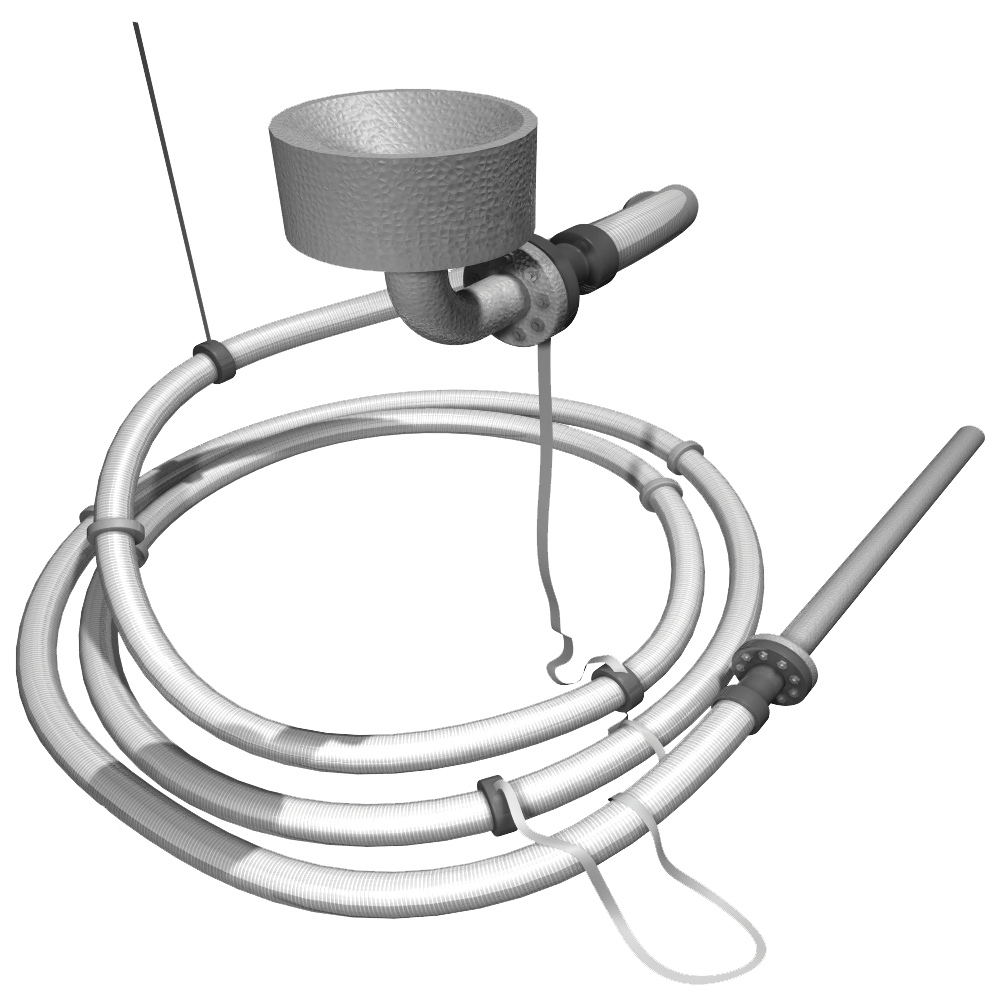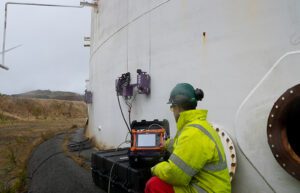As a building owner, choosing a high-quality and properly designed roof drain system is one of the most important decisions you can make to protect your investment. Selecting flexible roof drains that can withstand temperature fluctuations, weather events, and the test of time is key to ensuring the longevity and performance of your roof. When evaluating your options, there are three critical factors you must consider: durability, flow rate, and installation. Focusing on these key elements will help guide you to the ideal solution for your building’s needs and provide peace of mind that your roof will remain watertight for years to come. With an array of sizes, styles, and materials to choose from, doing your due diligence upfront is well worth the effort.
Roof Slope and Pitch – How It Impacts Drainage
The slope and pitch of your roof directly impact the effectiveness of your roof drainage system. Steeper slopes allow water to run off more quickly, while flatter roofs require drains placed closer together to handle the slower water flow.
For roofs with a slope of 1/4 inch per foot or less (1-2 degrees), drains should be spaced no more than 15 to 20 feet apart. Roofs sloping 1/2 inch per foot (3 degrees) can have drains spaced 20 to 30 feet apart. On steeper slopes of 3/4 inch per foot (5-6 degrees) or more, drains can be 30 to 40 feet apart.
The size of your roof also determines the number of drains needed. Large, expansive roofs require more drains to handle the higher volume of water, even on steeper slopes. As a general rule of thumb, you will want at least 1 drain for every 1,000 to 2,000 square feet of roof area.
It is also important to consider your local building codes regarding roof drainage. Many specify a minimum number of drains required based on the size and slope of the roof. Following these codes helps ensure your drains can handle the heaviest rainfall events in your area and prevent overloading the drainage system.
In addition to slope, size, and building codes, also consider the layout of pipes and drains to maximize efficiency. Place drains in the lowest areas of the roof and at junction points where water will collect. Pitch pipes at least 1/4 inch per foot to allow for adequate drainage. And for larger roofs, a main collector pipe leading to downspouts minimizes the number of vertical drops needed.
By properly assessing your roof’s slope and pitch and determining the optimal number, size, layout and spacing of drains for your square footage, you can ensure your flexible roof drain system operates effectively for maximum performance and longevity. An efficient drainage system is the foundation of a weather-tight, long-lasting roof.
Material Options: Cast Iron, Stainless Steel, Aluminum
When selecting a roof drain system, you have three main material options to consider: cast iron, stainless steel, and aluminum. Each has its advantages and disadvantages depending on your building and budget.
Cast Iron
Cast iron drains are extremely durable and long-lasting. They can withstand high temperatures and the elements without damage. However, cast iron is more expensive and difficult to install due to its weight. It also has a higher chance of leaking over time as the material can crack. For high-rise buildings or locations with fluctuating weather, cast iron may be a stable choice despite the higher cost.
Stainless Steel
Stainless steel drains are also durable and rust-resistant but lighter than cast iron. They are a mid-range option in terms of cost and easier to install and repair. Stainless steel can last 30-50 years with proper maintenance. The material is best for standard commercial buildings in temperate climates. For some projects, stainless steel offers the best combination of durability, affordability and low-maintenance.
Aluminum
Aluminum drains are lightweight, inexpensive, and resistant to corrosion. However, aluminum is the least durable of the three options and more prone to dents or damage. Aluminum drains typically only last 10-20 years. Aluminum may suit temporary or low-budget buildings, but for most commercial projects, cast iron or stainless steel are better long-term investments.
In summary, for your roof drainage system, evaluate your priorities between material durability, cost, and installation requirements. The right choice depends on the specific demands and constraints of your building. With regular inspection and maintenance, any of these options can provide effective water drainage for years to come.

Sizing the Roof Drains Correctly
Ensuring your roof drainage solutions are appropriately sized is essential for an efficient drainage system. Drains that are too small will not adequately remove water, while oversized drains waste resources. Consider the following factors when determining the correct size for your roof drains:
Roof Area and Pitch
The area and slope of your roof directly impact the volume of water that needs to be drained. A larger, steeper roof will require higher-capacity drains than a smaller, flatter one. For most buildings, drains should be spaced so that no more than 1,500 square feet of roof area drains to a single outlet. Calculate your total roof area and required number of drains based on this standard.
Rainfall Intensity
The intensity and frequency of rainfall in your area should also influence your drain sizing. Locations that experience short, heavy downpours will need larger drains than those with lighter, more gradual rain. Check with local building codes for specific rainfall rates to use in your calculations. It is best to size drains for at least a 10-year storm, meaning the heaviest rain likely to occur over a 10-minute period once every 10 years.
Secondary Drainage
If your roof has parapets, internal drains or scuppers, factor these into your sizing calculations. Secondary drainage like parapet scuppers help remove water from the roof perimeter and reduce the load on main roof drains, allowing you to use smaller primary drains. However, main drains must still be large enough to handle the entire roof area in case secondary drains become blocked.
By carefully considering these factors, you can determine the optimal size and number of roof drains for effective and efficient removal of rainwater from your building’s roof. Properly sized drains will help ensure a long lifespan for your roof and prevent costly water damage over the years. If uncertain about any part of the sizing process, consult an expert roofing contractor. They can assess your specific site conditions and recommend an appropriately sized drain system.
Other Important Features to Look For
When choosing a roof drain system, several other factors are important to consider beyond size and material. The specific features and components of the system can significantly impact its effectiveness and ease of use.
Flow Control
For maximum efficiency, look for a system that allows you to control the flow rate. An adjustable inflow control device regulates how much water enters the drain, preventing overflow. It also allows you to increase flow during heavy rains. An adjustable outflow control device regulates how quickly water exits the drain, which can help prevent downstream flooding.
Accessibility
Easily accessing the drains for inspection and maintenance is crucial. Choose a system with drains that are accessible from the roof level so they can be properly cleaned and unclogged when necessary. Removable grates, domes, and covers provide access to the drains without needing to remove any pipework. Some drains also feature integral recessed sockets to make grate removal simple using basic tools.
Additional Components
Other useful components to look for include:
- Strainers and filters to prevent debris from entering and clogging the drains. Mesh screens and grated inlets filter out large particles while still allowing maximum water flow.
- Expansion joints to absorb movement from thermal expansion, building settlement, and wind loads. Flexible joints prevent damage to drains and piping.
- Insulation to prevent condensation build-up in cold weather. Pre-insulated drains and the option to retrofit insulation help ensure drains do not freeze over.
- Anchors and clamping rings to securely fasten drains and provide a waterproof seal. Proper anchorage is important for drains located in traffic areas or that will experience heavy loads.
- Dome grates for areas with pedestrian traffic. Domed grates prevent tripping by providing an even walking surface.
Choosing a components of roof drain system with the right mix of features and components for your specific building and needs will help ensure maximum performance, reduced maintenance, and a long service life. Considering factors beyond just size and material is key to finding a system that truly fits like the perfect piece of the puzzle.
Conclusion
As you can see, selecting the appropriate roof drain system for your building requires considering several key factors to ensure optimal performance, longevity, and safety. By determining the types of contaminants you need to filter, the volume of water you need to move, and the configuration of your rooftop space, you can choose a roof drain system tailored to your needs. Installing the proper roof drains is an investment that will serve you and your building well for years to come through effective drainage and water removal. With some forethought and the help of a knowledgeable contractor, you can have confidence knowing your roof is properly equipped to handle the elements.




